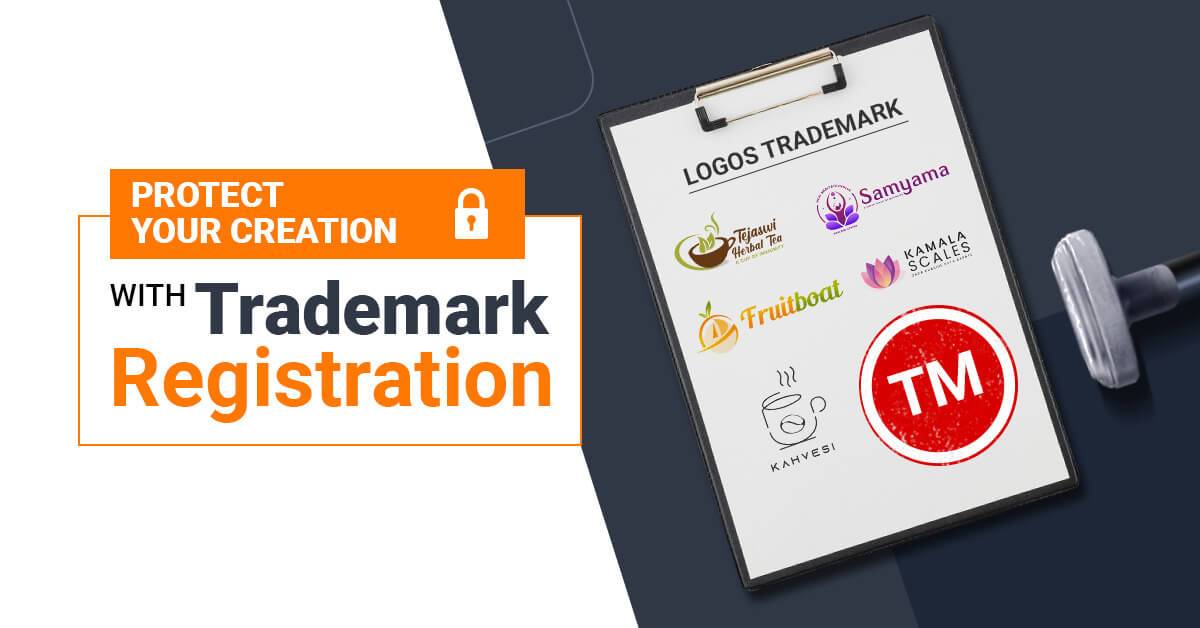A trademark is a recognizable sign, design, or expression that identifies and distinguishes products or services of a particular source from those of others. It can include logos, slogans, brand names, and even sounds or smells that are unique to your brand. By registering a trademark, you gain exclusive rights to use it in connection with your products or services, preventing others from using similar marks that could confuse consumers.
Benefits of Registering a Trademark
- Legal Protection: Once registered, a trademark provides legal protection against unauthorized use by others.
- Brand Recognition: A trademark helps in building brand identity and recognition, making it easier for customers to find and trust your products.
- Exclusive Rights: Registration grants the owner exclusive rights to use the trademark nationwide and the ability to take legal action against infringement.
- Intangible Asset: A registered trademark is an intangible asset that can add significant value to your business.
- Perpetual Ownership: With timely renewals, trademark registration can provide perpetual ownership.
How to Register or Trademark Your Brand in India
Step 1: Searching for a Unique Brand Name
Registering a trademark in India is a detailed process, and the choice of your brand name plays a crucial role in how quickly it gets approved. Here are some points to consider when choosing a name:
- Avoid Generic Names: Generic names are difficult to get approved, especially if they describe the product category. For example, a brand named “No-Maida” for baked goods is likely to be rejected due to the generic term “Maida.” Instead, opt for a combination or made-up word like “Brownia,” which is more likely to be approved.
- Conduct a Trademark Search: Use the IP India website to search for existing trademarks in your product category. Look at names that have been objected to and those not yet used to avoid potential conflicts.
Step 2: Decide Whether to DIY or Outsource
You have two options for filing your trademark application:
- DIY Approach: You can file the application yourself using the forms and fees outlined on the IP India website. Filing can be done manually or via e-filing.
- Outsource to Professionals: Hiring a lawyer or an online service provider can be beneficial, especially if your application faces objections. Service providers often offer cost-effective packages for small businesses and can help identify the appropriate trademark class.
Understanding Trademark Classification
You must categorize your goods or services under a specific trademark class. For instance:
- Class 16: Includes paper, cardboard, and related products.
- Class 9: Includes electronic publications and software.
You might need to register under multiple classes. For example, a book could be registered under Class 9 for electronic formats and Class 16 for printed versions.
For single class applications, fill out Form TM-1 (costing Rs. 3500). For multiple classes, use Form TM-8 (costing Rs. 3500 per class).
Step 3: Collect Your Documents
Prepare the following documents for your trademark application:
- Applicant’s Name
- Business Type: Specify if it’s a proprietorship, private limited company, or an individual application.
- Identity and Business Proof: Provide personal identity proof (Aadhar card, voter ID) or business registration documents (for companies).
- Brand/Logo/Tagline: Most lawyers recommend trademarking the combination of your brand name, tagline, and logo.
- Form 48: An affidavit authorizing a lawyer or filing company to apply on your behalf.
Step 4: Submit the Application
- Manual Filing: Takes 15-20 days for confirmation.
- E-Filing: Provides immediate acknowledgment. You can start using the “TM” symbol as soon as you receive the acknowledgment.
Application Processing
- Vienna Codification: The application is coded as per international standards.
- Examination: The Registrar checks for conflicts with existing trademarks and compliance with the law. If objections are raised, you will be notified and can respond.
- Publication: If approved, the trademark is published in the Indian Trade Mark Journal for 90-120 days for public objections.
- Objections: If objections are raised, you must contest them in court.
- Registration Certificate: Once approved, you receive a trademark certificate and can use the ® symbol.
Special Tips for E-Commerce Sellers
If you plan to sell on platforms like Amazon or Flipkart, most will require brand registration documents. You can start selling using the “TM” symbol while your application is in process. Apply for exemptions like GTIN on Amazon if needed.
When creating an online presence, check for domain name availability alongside your trademark search to ensure a cohesive brand identity.
Registering a trademark might seem complex, but it’s a crucial step in protecting your brand and ensuring its unique identity. With careful planning and the right assistance, you can navigate the process smoothly and secure your brand’s future.
Example
For instance, Sri Laxmi Plastics Pvt. Ltd, which manufactures plastic storage containers, wants to sell online via Amazon. Knowing that a branded product sells better, they decide to register the brand name “Organiso.” This strategic move not only enhances the product’s marketability but also provides legal protection against copycats.
Documents Required to Trademark Your Brand in India
Registering a trademark in India involves submitting several documents to ensure your application is complete and accurate. Below is a detailed list of the documents you will need:
1. Applicant’s Details
- Name: Full name of the applicant (individual or entity).
- Address: Complete postal address.
- Nationality: For individuals, specify the nationality. For companies, indicate the country of incorporation.
2. Business Type
- Proprietorship: If applying as a sole proprietor, provide the proprietor’s name and address.
- Partnership Firm: Details of all partners, including their names and addresses, along with the partnership deed.
- Private/Public Limited Company: Incorporation certificate, and details of the directors.
- Limited Liability Partnership (LLP): Incorporation certificate, and details of the partners.
3. Identity and Business Proof
- Individuals: Personal identity proof such as Aadhar card, voter ID, passport, or driving license.
- Companies: Registration certificate, Memorandum of Association (MOA), and Articles of Association (AOA).
- Partnerships and LLPs: Partnership deed, LLP agreement, and registration certificate if applicable.
4. Power of Attorney (Form TM-48)
- Form TM-48: This form authorizes an agent (lawyer or trademark attorney) to file the trademark application on your behalf. It must be duly signed by the applicant.
5. Trademark Details
- Brand Name/Logo/Tagline: A clear representation of the brand name, logo, or tagline. If applying for a logo, provide a high-resolution image.
- Description of Goods/Services: Detailed description of the goods or services associated with the trademark.
- Class of Trademark: Identify the class under which the trademark is to be registered, according to the NICE classification.
6. Statement of Use
- Intent to Use: If the trademark is not yet in use, a statement of intent to use the trademark in the future.
- Date of First Use: If the trademark is already in use, provide the date of first use in commerce.
7. Affidavit of Use (if applicable)
- Affidavit: An affidavit declaring the date of first use and continuous use of the trademark, along with supporting documents such as invoices, advertisements, or product packaging.
8. Additional Documents (if applicable)
- Translation/Transliteration: If the trademark includes words in a language other than English or Hindi, provide a translation or transliteration of those words.
- NOC from Proprietor: If the trademark includes a person’s name or an image of a person, provide a No Objection Certificate (NOC) from the individual or their legal heir.
9. Government Fees
- Payment Receipt: Proof of payment of the applicable government fees for trademark application filing. Fees vary depending on whether the applicant is an individual, small enterprise, or a larger entity.
Summary
To successfully register a trademark in India, you need to prepare and submit the following documents:
- Applicant’s details (name, address, nationality)
- Business type proof (proprietorship, partnership, company)
- Identity and business proof (Aadhar card, voter ID, registration certificates)
- Power of Attorney (Form TM-48)
- Trademark details (brand name, logo, tagline, class)
- Statement of use or intent to use
- Affidavit of use (if applicable)
- Additional documents (translation/transliteration, NOC)
- Payment receipt for government fees
By ensuring all these documents are in order, you can facilitate a smoother trademark registration process and secure legal protection for your brand in India.
How to Register a Trademark Name in the United States
Step 1: Choose a Trademark for Your Business
Choosing a unique brand name, phrase, or design that represents your business is the first step in obtaining a trademark. There are two advantages to selecting a distinctive business name or logo:
- People will easily be able to associate it with your products/services.
- It’s easier to defend your trademark if someone uses it illegally.
The USPTO recommends businesses choose a trademark from the following categories:
- Fanciful trademarks: New words that aren’t in the dictionary. For example, Rolex®.
- Arbitrary trademarks: A word that has no relation to the type of goods you sell. For example, Dove® personal care products.
- Suggestive trademarks: Words that hint at the products or services you offer. For example, Netflix® for online streaming.
It’s better to avoid choosing generic terms to register a trademark. For example, you can’t trademark the word “cafe” for your coffee business. Also, avoid common descriptors of a product or service. For example, you won’t be able to trademark the word “crunchy” for a potato chip. Note: A descriptive trademark may get approval if it has acquired uniqueness through the company using it for years.
Step 2: Search if the Trademark is Already Used
Before filing a trademark application, you must ensure the name or design you want to trademark isn’t the same or similar to existing trademarks or applications in process. The USPTO considers the “likelihood of confusion” as a reason for rejecting similar trademarks.
So, before you proceed with the application, it’s recommended that you conduct a “clearance search” to ensure your name or design is unique. It saves you time and money by preventing you from going through the federal trademark registration process.
You may search the registered trademarks and existing applications in the Trademark Electronic Search System (TESS). Here are a few things to look out for:
- Same names, phrases, and designs
- Names that sound similar when spoken
- Names that translate to the same meaning
- Plural forms and words with an apostrophe
The USPTO encourages applicants also to use other sources, like state databases and Assignments on the Web (AOTW). You may also hire a firm specializing in trademark search services. If you plan to register a special form of trademark, you need to search the TESS using a design search code. It’s a six-digit code assigned to specific design elements. Refer to the design search code manual to find the correct codes.
You’ll want to head back to the drawing board if your name or design is too similar to an existing trademark. Alternatively, you might be able to buy the existing trademark if you’re set on using a particular name, design, etc.
Step 3: Prepare a Trademark Application
After the clearance search, you can start preparing your trademark application. You should also determine in which class of goods and services you want to register a trademark.
Keep the following items ready for the application filing:
- Business owner’s name and address
- Drawing of the trademark if it’s a special form (JPEG format)
- Sound file if it’s a sound mark (WAV format)
- Description of the trademark
You may register a name or design you’ve used for a long time. In such a case, you should show the filing basis for the trademark as “use in commerce.” However, show the basis as “intent to use” if you’re starting a new business and plan to use the name or design for the first time.
If you’re filing under the use-in-commerce basis, you need to supply a specimen as evidence of the current usage. For example, you must submit photographs of how your name or design is used on product hangtags, packaging, brochures, or your website.
Step 4: File the Trademark Application
You can start filing the trademark application by creating an account with the USPTO website. You also need to verify your identity either offline or online. Next, you should fill out the online application form on the Trademark Electronic Application System (TEAS). You have two options to file your application:
- TEAS Plus: Use this option if you have all the materials and information ready to start filing. Your goods or services category should be in the Trademark ID Manual. The filing fee for TEAS Plus is $250 per goods or services class.
- TEAS Standard: Use the standard filing option if you don’t have all the information required for TEAS Plus or want to file for a category of goods or services that is not in the Trademark ID Manual. The filing fee is $350 per class.
Step 5: Follow Up on Your Application
After you submit the trademark application, the USPTO will assign an attorney to examine your application. If the examining attorney finds no conflicting trademarks or other issues, they’ll approve the application. If the examining attorney finds an issue, they’ll send you a notification, known as an office action. You might need to respond to the office action through a call, email, or the TEAS as directed by the attorney. The USPTO might reject the application if you don’t respond within the deadline. You may appeal this verdict through the Trademark Trial and Appeal Board (TTAB).
According to the USPTO, a new trademark application can take around 14.5 months to complete. You may use your trademark application serial number to track the progress.
Step 6: Maintain Your Approved Trademark
It’s not enough to obtain a trademark registration. You must file a declaration of use five to six years after the approval for continued trademark protection. You must also file a renewal application nine to 10 years after the trademark approval and every 10 years after that.
Limitations of Trademarks
Getting a trademark doesn’t guarantee your intellectual property is safe from misuse. The USPTO only issues trademarks. It’s up to you as the trademark holder to keep an eye out for infringements and initiate legal action when you find them. It’s also crucial to retain your trademark.
Emily Poler, a partner at law firm Poler Legal, says trademark owners need to protect their trademarks from unauthorized use “by sending cease-and-desist letters to infringers and opposing the registration of potential similar marks.”
Trademarks aren’t issued for a lifetime. You must also provide evidence of trademark usage by filing the appropriate forms to retain your trademark.
Now that you know how to trademark a name or design in the US, you can collect the required information and start your clearance search. The application process could take over a year, so it’s best to begin this process well in advance.
I am Komal Hatwaani, aims to provide readers with informative and engaging content that covers everything from technology and business to entertainment and lifestyle. This website dedicated to delivering high-quality content that informs, entertains, and inspires our readers.
Join us on our journey as we continue to explore the ever-evolving landscape of news and information, providing you with valuable insights and perspectives that enrich your digital experience.













